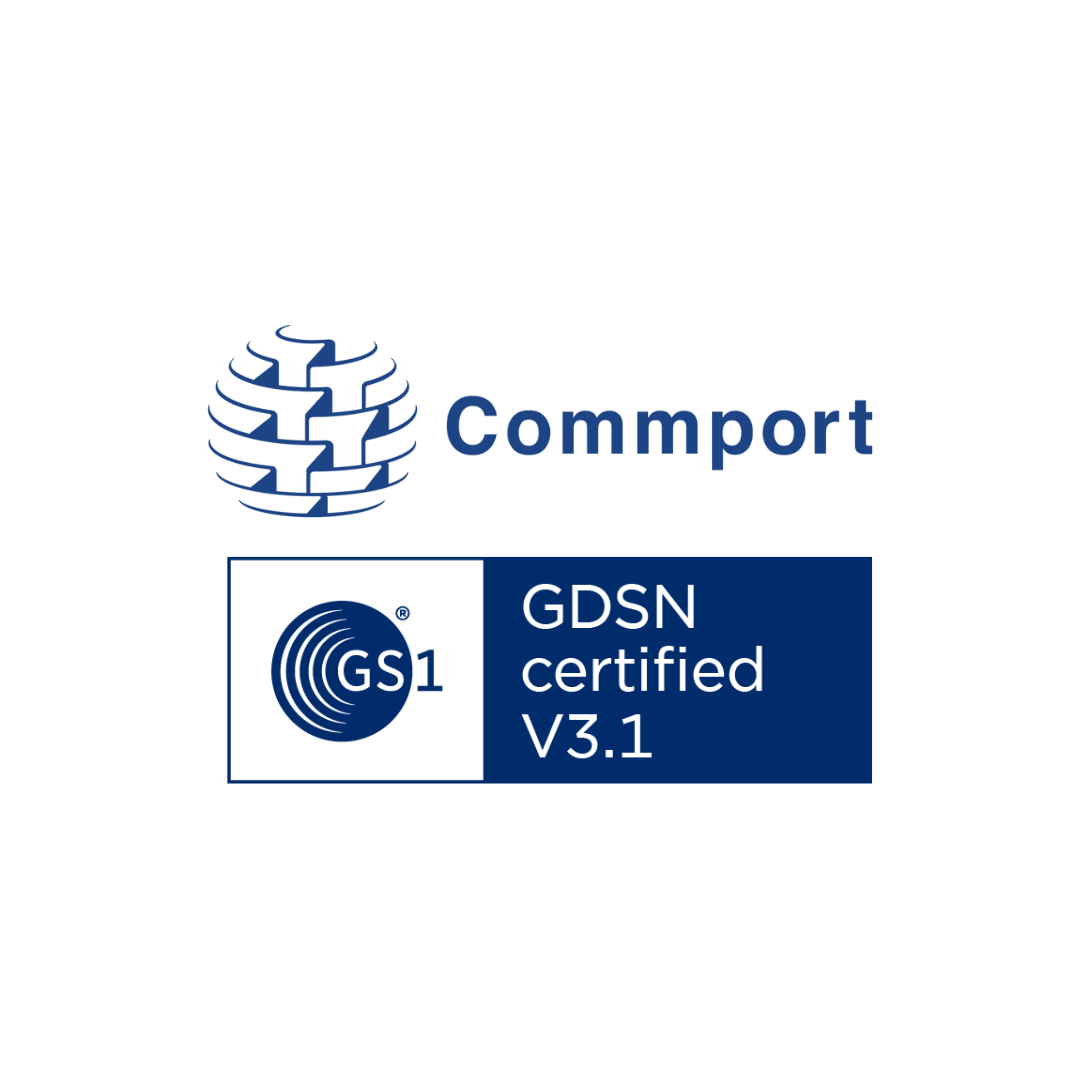Introduction
The GS1 GDSN network processes over 1 million GTINs through its data pool system every week. Since its establishment in 2004, the Global Data Synchronization Network (GDSN) has become the cornerstone of global supply chain efficiency. This standardized system connects manufacturers, suppliers, distributors, and retailers through a network of data pools, where product information is stored and continually updated.
Currently, there are more than 50 GS1-certified data pools according to GS1, serving as central hubs that facilitate standardized product data exchange between trading partners. Through this synchronized network, businesses can reduce supply chain errors, lower operational costs, and significantly improve distribution speed for retail partners worldwide.
Key Takeaways
- GDSN processes over 1 million GTINs through 50+ certified data pools, creating the world’s largest standardized product data network for global commerce.
- Companies achieve a 25% reduction in data errors and 30% increase in operational efficiency when implementing GDSN solutions for supply chain management.
- Real-time synchronization eliminates manual data entry, ensuring all trading partners work with current, accurate product information across the entire supply chain.
- Key identifiers (GLNs, GTINs, GPC) enable seamless connectivity between manufacturers, suppliers, distributors, and retailers regardless of their chosen data pool.
- Enhanced data accuracy builds consumer trust, with 94% of consumers showing greater loyalty to brands offering complete product transparency.
What is the GS1 GDSN Network?
The GS1 Global Data Synchronization Network (GDSN) represents the world’s largest product data network, specifically designed to streamline information sharing across the supply chain. Unlike traditional data exchange methods, GDSN creates a standardized ecosystem where trading partners can exchange accurate product information with confidence and efficiency.

Definition and Purpose of GDSN
GDSN is essentially a data-sharing protocol that enables trading partners to share product master data with continuous updates. This interconnected network of data pools was created to solve a fundamental challenge in modern commerce, which is to ensure all supply chain participants have access to the same, consistent product information. Through GDSN, companies can establish an authoritative data source to align product details across their internal systems and with trading partners.
The network serves multiple purposes:
- Ensuring synchronized and accurate data exchange across the supply chain in real time
- Providing access to consistent information, including product attributes, weight, description, brand name, GTINs, and manufacturer details
- Supporting the movement of products across the global supply chain with standardized data
The Relationship Between GS1 and GDSN
GS1 and GDSN maintain a creator-creation relationship. GS1, a not-for-profit international organization, developed the GDSN to support high-quality product data exchange. Fundamentally, GDSN is a network that uses GS1 standards to facilitate real-time sharing of standardized product data among trading partners in the supply chain.
While GS1 establishes the global standards for product identification and communication, GDSN functions as the implementation mechanism for these standards. GS1 continuously updates GDSN to match current standards of product data sharing.
Evolution of GDSN Standards
Initially, the concept of data synchronization emerged in the late 1990s within the retail industry. The Uniform Code Council (UCC), later known as GS1, formed a task force in 1998 to develop standards for electronic data interchange in retail.
The first version of GDSN, called the Global Registry of Master Data (GRMD), launched in 2004. Following this milestone, UCC and EAN International merged in 2005 to form GS1, which took responsibility for managing GDSN.
Over time, GDSN has evolved significantly:
- In 2016, GS1 launched GDSN Major Release 3, introducing new data attributes and enhancing system performance
- In 2018, GDSN Major Release 4 focused on improving data quality and increasing adoption
- Currently, GS1 GDSN is preparing to implement the 3.1.31 standard into the network in May 2025
Today, thousands of companies worldwide use GDSN to synchronize product data with their trading partners.
How GDSN Data Pools Function as Connection Hubs
At the core of the GS1 GDSN network are data pools that serve as vital connection hubs between trading partners across the global supply chain. These specialized platforms enable seamless communication between manufacturers, suppliers, distributors, and retailers through standardized data exchange.
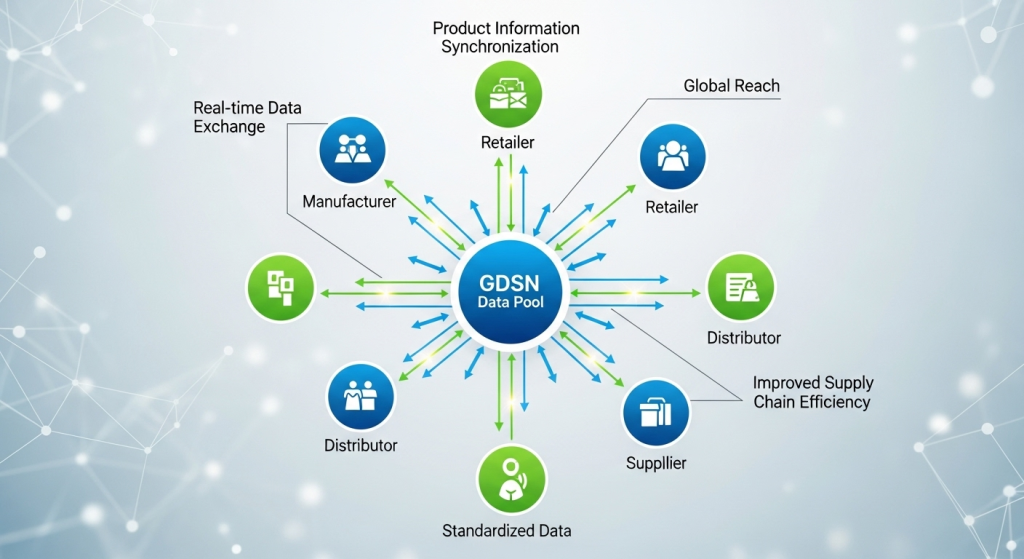
What is a GDSN Data Pool?
A GDSN data pool is a centralized solution designed to store and syndicate product information. It functions as an intermediary repository where trading partners can securely share standardized product data. For a data pool to operate within the GDSN, it must comply with GS1 standards and undergo thorough testing to ensure interoperability. Notably, trading partners can only synchronize data within the GDSN by using a GS1-certified data pool.
List of GDSN Certified Data Pools
Currently, the GDSN consists of approximately 50 GS1-certified data pools worldwide. These data pools vary considerably in their capabilities, user experience, and pricing structures. Some prominent examples include
- Commport GDSN Datapool,
- 1WorldSync,
- and Salsify.
Commport GDSN Datapool Solution, is a GS1-certified GDSN datapool since 2005, is trusted by over 3,000 brands worldwide. It allows businesses to centralize, enrich, and sync all product data to multiple trading partners and marketplaces in one click!
Data Validation and Synchronization Process
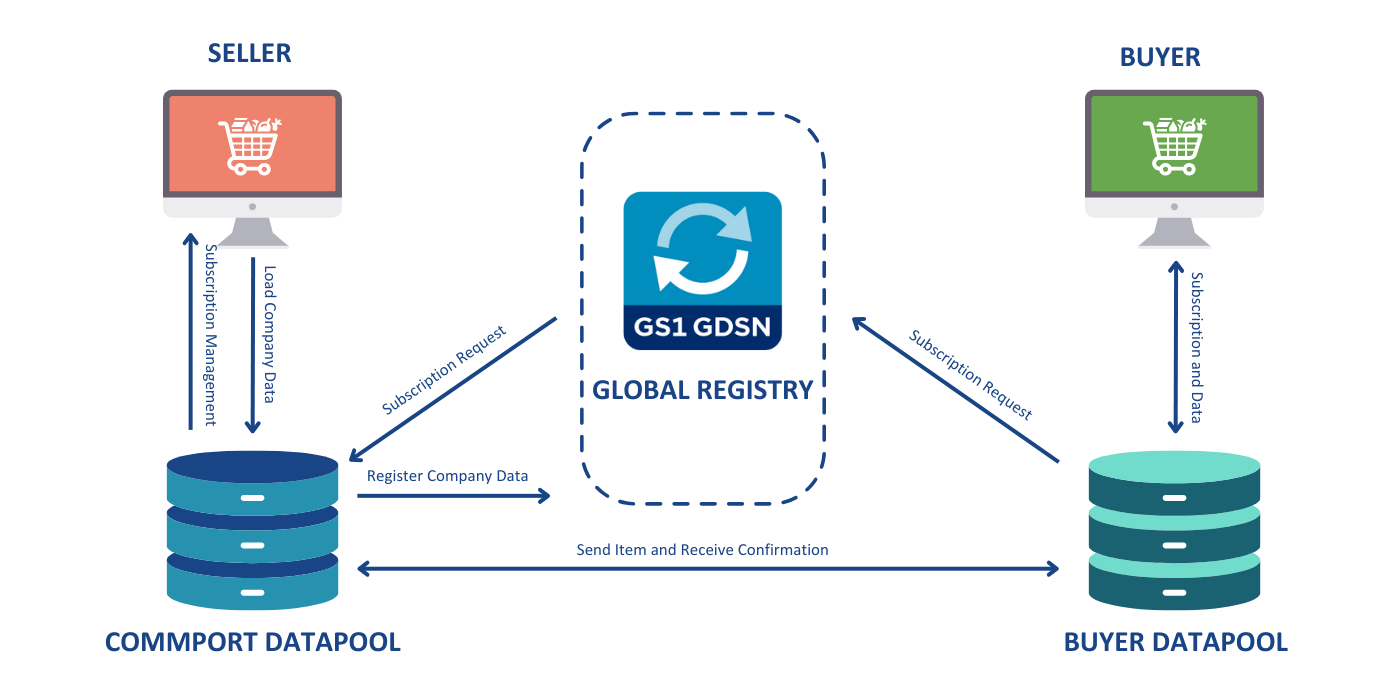
During the synchronization process, datapools perform validation checks to maintain data quality and integrity. The process involves five key steps:
- Loading data into the source data pool,
- Registering a subset with the GS1 Global Registry,
- Requesting subscriptions from recipients,
- Publishing the requested data, and
- Confirming receipt.
Through this mechanism, datapools facilitate clean, standardized information exchange between partners regardless of which certified datapool they use.
Real-Time Product Information Updates
One fundamental advantage of GDSN datapools is their ability to provide real-time updates. Whenever a supplier modifies product information in their data pool, these changes are immediately distributed to all authorized retailers who have subscribed to that supplier’s data. Consequently, this instantaneous notification system minimizes errors and reduces the need for manual data entry, ensuring all parties work with the most current product information.
Key Components That Enable GDSN Connectivity
For the GS1 GDSN network to function properly, four key components work together to enable seamless data exchange between trading partners across the supply chain.
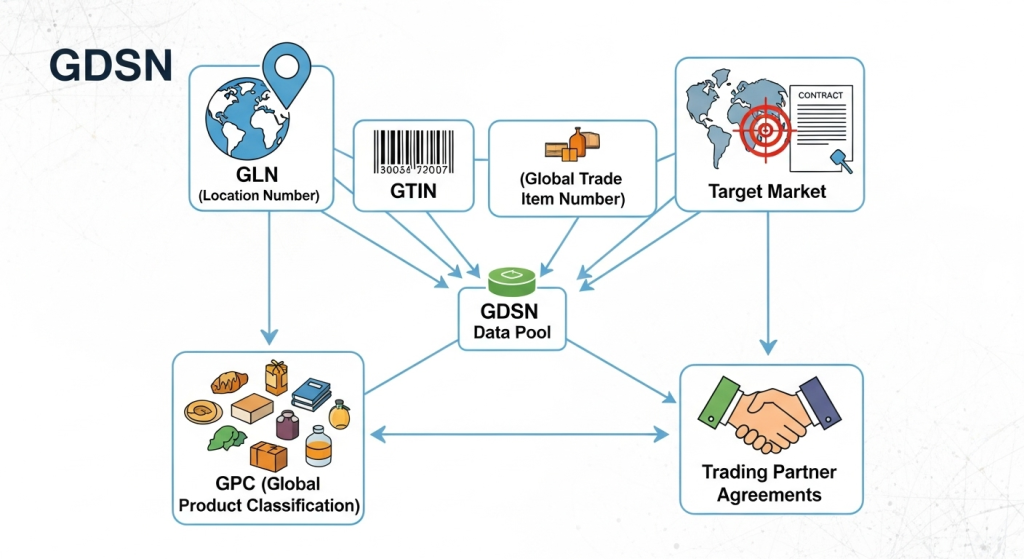
1. Global Location Numbers (GLNs)
The Global Location Number (GLN) serves as a unique identifier for physical locations, operational locations, and legal entities within the supply chain. This 13-digit number provides unambiguous identification that improves communication efficiency with trading partners. GLNs eliminate the need to communicate names, addresses, and other location information with every transaction, as this data is stored in relevant systems and retrieved using the GLN. Within the GDSN, GLNs are mandatory and play an essential role by identifying data owners, information providers, and physical locations.
2. Global Trade Item Numbers (GTINs)
GTINs function as unique product identifiers that companies use for all their trade items. These standardized codes come in four structures: GTIN-8 (for small items), GTIN-12 (UPC in North America), GTIN-13 (used predominantly outside North America), and GTIN-14 (for identifying trade item groupings). GTINs serve as keys to retrieve predefined information such as prices, product attributes, or other data shared through the GDSN.
3. Global Product Classification (GPC)
The GPC standard helps trading partners group products consistently worldwide, creating a common business language. Its structure includes segments (highest level, representing an industry), families, classes, and bricks (product codes). The brick is the primary building block, with additional brick attributes providing specific product details. GPC delivers several benefits:
- Creates a common language for products across countries and regions
- Improves data accuracy and integrity
- Speeds up supply chain responsiveness
- Simplifies reporting across product categories
4. Target Markets and Trading Partner Agreements
Target Market (TM) country codes identify where items will be sold. This identification is critical because products with identical bar codes may have unique differences depending on the target market. Additionally, Trading Partner Agreements (TPAs) provide legal protection for data sources throughout the GDSN. These agreements acknowledge data ownership and establish remedies if data is shared inappropriately with unauthorized entities.
Benefits of GDSN for Supply Chain Stakeholders
Implementing the GS1 GDSN delivers measurable returns across the supply chain ecosystem. Organizations report tangible benefits that continue to grow as supply chains become increasingly complex and customer expectations evolve.
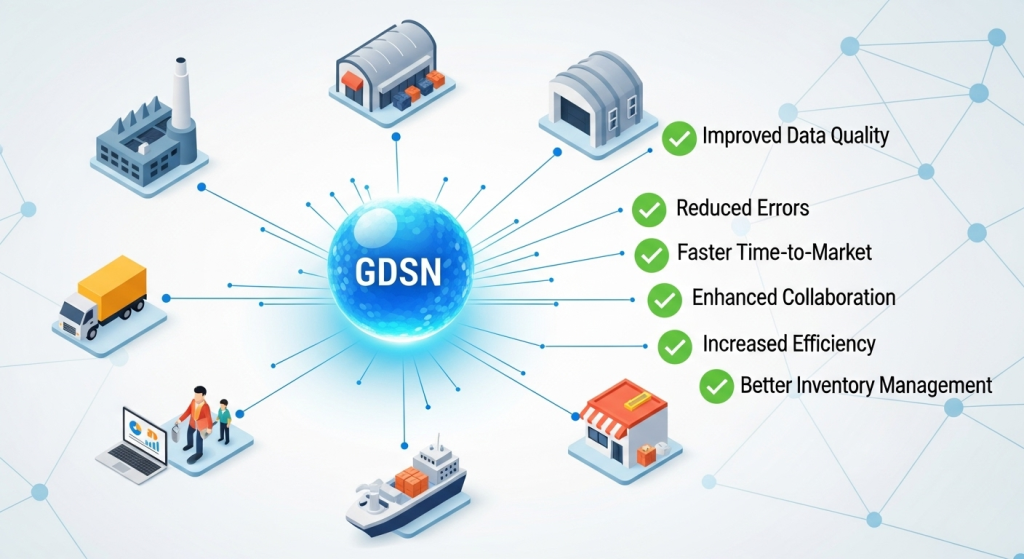
1. Advantages for Manufacturers and Suppliers
Manufacturers using GDSN experience a remarkable 25% reduction in data errors and 30% increase in operational efficiency. This improvement dramatically shortens time-to-market for new products. Commport Datapool solution, a GS1 certified GDSN datapool since 2005, trusted by over 3000+ brands worldwide, helps companies centralize, enrich, and sync all product data to multiple trading partners and marketplaces in one click! Furthermore, GDSN creates greater supply chain visibility, allowing manufacturers to forecast better and plan for potential delays or increased demands.
2. Benefits for Distributors and Retailers
Retailers receive precise and consistent product data from suppliers through GDSN, markedly reducing errors and discrepancies in product listings. This synchronized information enables better category management, smoother logistics operations, and faster administrative data handling. Accurate data furthermore helps retailers manage inventory more effectively, reducing overstock and stockouts, thereby enhancing customer satisfaction.
3. Cost Savings and Operational Efficiency
The financial impact of implementing GDSN is substantial:
- BD (Becton, Dickinson and Company) achieved a 30% reduction in outstanding days payable and 73% reduction in ordering discrepancies
- McKinsey reports that companies with advanced supply chain transparency can reduce costs by up to 50%
- Track and trace solutions can reduce inventory errors by up to 30%
4. Enhanced Data Accuracy and Customer Experience
Primarily, GDSN ensures data quality through rigorous testing and validation against various standards and regulatory requirements. This accuracy builds consumer trust, with studies showing 94% of consumers are more likely to be loyal to brands offering complete transparency. Moreover, 73% of consumers willingly pay more for products providing detailed information about sourcing and production processes.
Conclusion
The GS1 GDSN network stands as a transformative force in global supply chain management. Throughout this article, we’ve seen how this standardized system connects manufacturers, suppliers, distributors, and retailers through specialized data pools. Therefore, businesses can now exchange critical product information with unprecedented accuracy and efficiency.
GDSN datapools serve as the backbone of this network, facilitating real-time updates and ensuring data validation across all trading partners. Additionally, key components such as GLNs, GTINs, Global Product Classification, and Target Markets work together to create a seamless ecosystem for product information exchange.
Undoubtedly, the benefits of implementing GDSN extend to all supply chain stakeholders. Manufacturers experience up to 25% reduction in data errors while retailers gain access to precise, consistent product information. This accuracy consequently leads to better inventory management, reduced costs, and enhanced customer experiences.
The evolution of GDSN standards since 2004 reflects the growing importance of standardized data in our increasingly complex commercial landscape. Companies that adopt GDSN solutions like Commport Datapool gain significant competitive advantages through streamlined operations and improved trading partner relationships.
Supply chain efficiency ultimately depends on accurate, synchronized data. GDSN provides the framework needed to achieve this synchronization across global markets. Businesses looking to thrive in today’s data-driven marketplace should consider GDSN implementation not just as a technical solution but as a strategic business decision that drives growth and customer satisfaction.
The future of commerce belongs to companies that can effectively manage and share product data. Thanks to the GS1 GDSN network, this future has already begun.
Commport GS1 Certified GDSN Datapool
Download: GDSN Buyers Guide
Empower your business with global data synchronization; download our GDSN Buyer's Guide today and take the first step towards streamlined, accurate, and compliant product data management.
Frequently Asked Questions
A GDSN data pool is a centralized platform that stores and syndicates standardized product information. It acts as an intermediary repository where trading partners can securely share product data, facilitating seamless communication between manufacturers, suppliers, distributors, and retailers across the global supply chain.
Unlike traditional methods, GS1 GDSN creates a standardized ecosystem for trading partners to exchange accurate product information efficiently. It ensures real-time synchronization of data, provides access to consistent product attributes, and supports the movement of products across the global supply chain using standardized data.
The key components enabling GDSN connectivity are Global Location Numbers (GLNs) for identifying locations and entities, Global Trade Item Numbers (GTINs) for unique product identification, Global Product Classification (GPC) for consistent product grouping, and Target Markets and Trading Partner Agreements for specifying where items will be sold and protecting data ownership.
Manufacturers and suppliers using GDSN experience a significant reduction in data errors, increased operational efficiency, and shorter time-to-market for new products. It also provides greater supply chain visibility, allowing for better forecasting and planning for potential delays or increased demands.
GDSN ensures data quality through rigorous testing and validation, which builds consumer trust. Studies show that 94% of consumers are more likely to be loyal to brands offering complete transparency. Additionally, the enhanced data accuracy enables retailers to manage inventory more effectively, reducing overstock and stockouts, thereby improving overall customer satisfaction.

